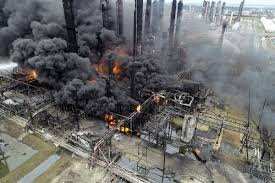The Devastating Impact of Chemical Accidents
Chemical accidents can have a catastrophic impact on both human health and the environment. These accidents occur in various industries, including manufacturing, agriculture, transportation, and storage. They can result in explosions, fires, toxic gas leaks, and chemical spills, causing immediate harm to those in the vicinity and leaving long-lasting effects on the affected areas.
Human Health Consequences
One of the most significant consequences of chemical accidents is the detrimental impact on human health. Exposure to hazardous chemicals can lead to a range of health problems, from minor irritations to severe injuries and even death. Inhalation of toxic gases or fumes can cause respiratory issues, such as difficulty breathing, lung damage, and chemical pneumonia.
Direct contact with hazardous substances can result in burns, skin irritations, and chemical burns. These injuries can be excruciatingly painful and may require extensive medical treatment, including surgeries and skin grafts. In some cases, exposure to certain chemicals can also lead to long-term health effects, such as cancer, reproductive disorders, and neurological damage.
Furthermore, chemical accidents can have a psychological impact on the affected individuals. Witnessing or experiencing such a traumatic event can lead to post-traumatic stress disorder (PTSD), anxiety, and depression. The fear of future accidents and the uncertainty surrounding the long-term consequences can significantly impact the mental well-being of the affected individuals and their communities.
Environmental Damage
Chemical accidents not only pose a threat to human health but also cause severe damage to the environment. When hazardous chemicals are released into the air, water, or soil, they can contaminate ecosystems, disrupt natural habitats, and harm wildlife. Aquatic life, in particular, is highly vulnerable to chemical spills and leaks, as toxic substances can quickly spread in water bodies and contaminate the entire ecosystem.
Chemical pollutants can also seep into the soil, affecting plant growth and agricultural productivity. Contaminated soil may require extensive remediation efforts to restore its fertility and ensure the safety of food crops. Additionally, chemical accidents can pollute groundwater, which serves as a source of drinking water for many communities. This contamination can have long-term consequences for human health, as it may take years or even decades for the groundwater to recover.
The environmental damage caused by chemical accidents can have far-reaching effects, impacting not only the immediate area but also neighboring regions. The contamination can spread through air and water currents, affecting ecosystems and communities located far from the original accident site. The long-term ecological consequences can be devastating, leading to the loss of biodiversity, ecosystem collapse, and irreversible damage to natural resources.
Prevention and Preparedness
Given the devastating impact of chemical accidents, it is crucial to prioritize prevention and preparedness measures. Industries that handle hazardous chemicals must adhere to strict safety regulations and implement robust safety protocols to minimize the risk of accidents. This includes proper training for employees, regular equipment maintenance, and the use of appropriate safety gear.
Furthermore, emergency response plans should be in place to effectively manage chemical accidents if they do occur. These plans should outline procedures for evacuating affected areas, containing chemical spills, and providing medical assistance to the injured. Regular drills and exercises can help ensure that all personnel are familiar with the emergency protocols and can respond swiftly and effectively in case of an accident.
Collaboration between industries, government agencies, and local communities is also essential in preventing and mitigating the impact of chemical accidents. Sharing knowledge, resources, and best practices can help identify potential risks and develop strategies to minimize them. It is crucial to promote transparency and open communication to address concerns, raise awareness, and foster a culture of safety.
Conclusion
The devastating impact of chemical accidents cannot be underestimated. From the immediate health consequences to the long-term environmental damage, these accidents have far-reaching effects on both human and ecological well-being. It is imperative that all stakeholders work together to prioritize safety, implement preventive measures, and be prepared for any potential accidents. By doing so, we can minimize the risks and protect ourselves, our communities, and our planet from the devastating consequences of chemical accidents.
